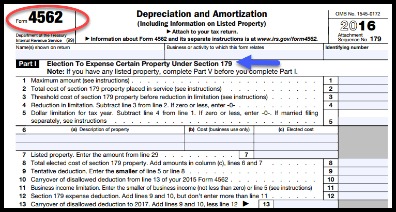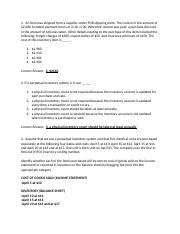
The company can now take steps to rectify the mistakes and balance its statements. Another possibility that may be causing problems is that the dates covered by the bank statement have changed, so that some items are included or excluded. This situation should only arise if someone at the company requested the bank to alter the closing date for the company’s bank account.

Check out our bookkeeping basics to continue setting up your books and how to read a banks balance sheet building a solid financial foundation for your new business. Michelle Payne has 15 years of experience as a Certified Public Accountant with a strong background in audit, tax, and consulting services. She has more than five years of experience working with non-profit organizations in a finance capacity.
Add book transactions to your bank balance
Let’s take a look at a hypothetical company’s bank and financial statements to see how to conduct a bank reconciliation. Clio’s legal trust management how do share capital and paid-up capital differ software, and Clio Accounting both provide lawyers with the ability to conduct trust account reconciliation–helping to keep your firm compliant and your client’s funds secure. When done frequently, reconciliation statements help companies identify cash flow errors, present accurate information to investors, and plan and pay taxes correctly. They can also be used to identify fraud before serious damage occurs and can prevent errors from compounding.
- The goal of this process is to ascertain the differences between the two, and to book changes to the accounting records as appropriate.
- Where there are discrepancies, companies can identify and correct the source of errors.
- Bank reconciliation statements ensure that payments were processed and cash collections were deposited into the bank.
- Michelle Payne has 15 years of experience as a Certified Public Accountant with a strong background in audit, tax, and consulting services.
- To quickly identify and address errors, reconciling bank statements should be done by companies or individuals at least monthly.
They also can be done as frequently as statements are generated, such as daily or weekly. There could be transactions unaccounted for in your personal financial records because of a bank adjustment. This may occur if you were subject to any fees, like a monthly maintenance fee or overdraft fee. For interest-bearing accounts, a bank adjustment could be the amount of interest you earned over the statement period. Maintaining accurate financial records makes it easier to organize your taxes when it comes time to file. Regular bank reconciliation saves you from having to review a full year of financial records—instead, you can quickly consult your reconciliation statements to review any required information.
Reconciling your bank statement can help you avoid bounced checks (or failing to make electronic payments) to partners and suppliers. Bank reconciliation also helps you identify fraud or theft and intervene early. If someone has withdrawn funds without your knowledge or consent, bank reconciliation will clue you in. Or maybe you scheduled a rent payment and listed it in your chart of accounts as usual, but the notification that your payment bounced went to your spam folder. As a result, you didn’t notice the payment actually bounced until your end-of-the-month bank reconciliation.
Adjusting Discrepancies Between Books and Bank
This is where your accounting software can help you reconcile and keep track of outstanding checks and deposits. Most reconciliation modules allow you to check off outstanding checks and deposits listed on the bank statement. You should perform monthly bank reconciliations so you can better manage your cash flow and understand your true cash position. Read on to learn about bank reconciliations, use cases, and common errors to look for. Keeping on top of your bank reconciliation ensures that you’re always aware of your company’s financial situation. This helps you anticipate any cash flow challenges so you can respond appropriately.
When Is the Best Time To Reconcile a Bank Statement?
Many companies may choose to do additional bank reconciliations in situations that involve large sums of money or that show unusual financial activity. This can include large payments and deposits or notifications of suspicious activity from your bank. A bank reconciliation compares a company’s cash accounting statements against the cash it has in the bank. A how to calculate loan payments with excel pmt function bank reconciliation is used to detect any errors, catch discrepancies between the two, and provide an accurate picture of the company’s cash position that accounts for funds in transit. The reconciliation process involves comparing internal financial records with external documents to identify and correct discrepancies. This includes investigating any differences, making necessary adjustments, and documenting the process for accuracy.
Kevin’s work has been featured in Bankrate, Credible, CreditCards.com, Fox Money, LendingTree, MarketWatch, Newsweek, New York Post, Time, ValuePenguin and USA Today. At Business.org, our research is meant to offer general product and service recommendations. We don’t guarantee that our suggestions will work best for each individual or business, so consider your unique needs when choosing products and services.
Common errors include entering an incorrect amount or omitting an amount from the bank statement. It’s recommended for a company to perform a bank reconciliation at least once a month. If your company receives bank statements more frequently, for example, every week, you may also choose to do a bank reconciliation for every statement you receive. Once you have access to all the necessary records, you need to reconcile, or compare, the internal trust account’s ledger to individual client ledgers. A bank may charge an account maintenance fee, typically withdrawn and processed automatically from the bank account.
Understanding the Bank Reconciliation Statement
At the end of this process, the adjusted bank balance should equal the company’s ending adjusted cash balance. Bank statements are commonly routinely produced by the financial institution and used by account holders to perform their bank reconciliations. As with deposits, take time to compare your personal records to the bank statement to ensure that every withdrawal, big or small, is accounted for on both records. If you’re missing transactions in your personal records, add them and deduct the amount from your balance.











